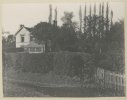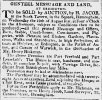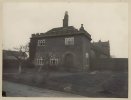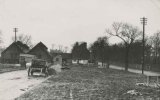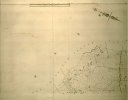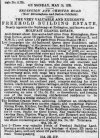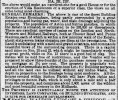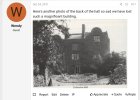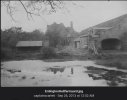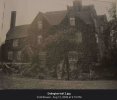-
Welcome to this forum . We are a worldwide group with a common interest in Birmingham and its history. While here, please follow a few simple rules. We ask that you respect other members, thank those who have helped you and please keep your contributions on-topic with the thread.
We do hope you enjoy your visit. BHF Admin Team
You are using an out of date browser. It may not display this or other websites correctly.
You should upgrade or use an alternative browser.
You should upgrade or use an alternative browser.
Erdington, Holyfast Farm.
- Thread starter Pedrocut
- Start date
says near erdington so could be anywhere pedro...will try and find it on a mapCan’t see any mention of Holyfast Farm, Erdington on the Forum. Must have been quite a place. But where was it ?
Holyfast Farm near Erdington creator: John Benjamin Stone. 1895.
(Birmingham Archives and Collections)
View attachment 202539
lyn
having no luck so far in finding it on a mapWell it looks like the name has gone through a transition since 1848 when it was Hollyfast, to Holyfast in Stone’s time, and maybe now Holifast.
lyn
Given the name Holyfast and the style of windows, perhaps it was the farm for a local religious prescence. For example, Old Oscott used to have it's own farm, can't remember the name of the farm. Could this have been it ? Also, I know Kingstanding (and possibly Old Oscott) came within Erdington at one time. Bit of guesswork and could be a complete red herring.
This is the one I was thinking about https://birminghamhistory.co.uk/forum/threads/college-farm-1870.42996/
Pedrocut
Master Barmmie
Just come across this post I had placed on Erdington history thread, and info from the Birmingham and Warwickshire Archaeological Society excavation…
In April 1960, during garden construction at the junction of Greenside Road and Grange Road, a 12C hut was discovered.
In the transcripts from 17C deeds some interesting info…
1. leading to Wysschawe is now Orphanage Road.
2. A way called Blackenhale is now Grange Road.
3. Withy Well way - Disappeared 1804 joined Moor End Lane and present Orphanage Road.
4. Berewode Streete now Chester Road.
5. Le Holifast is site of Poppy Lane.
In April 1960, during garden construction at the junction of Greenside Road and Grange Road, a 12C hut was discovered.
In the transcripts from 17C deeds some interesting info…
1. leading to Wysschawe is now Orphanage Road.
2. A way called Blackenhale is now Grange Road.
3. Withy Well way - Disappeared 1804 joined Moor End Lane and present Orphanage Road.
4. Berewode Streete now Chester Road.
5. Le Holifast is site of Poppy Lane.
Found this on an internet search. A mystery, as this seems to be different to previous info:. :
Holifaste Farm in Erdington is a historical estate with a notable past, particularly tied to the Mynors family and the Jennens family. The farm's history involves a mansion built in 1650 by the wealthy ironmaster John Jennens, which was later occupied by a farmer, William Wheelwright. The site, now under the Tyburn Road, was still occupied as a farm in 1908 but was demolished by 1912. The Mynors family, who owned Holifast Grange, also have records available at The National Archives,
Holifaste Farm in Erdington is a historical estate with a notable past, particularly tied to the Mynors family and the Jennens family. The farm's history involves a mansion built in 1650 by the wealthy ironmaster John Jennens, which was later occupied by a farmer, William Wheelwright. The site, now under the Tyburn Road, was still occupied as a farm in 1908 but was demolished by 1912. The Mynors family, who owned Holifast Grange, also have records available at The National Archives,
- John Jennens:
In 1650, the wealthy ironmaster John Jennens built a new brick mansion on the site, close to the original Holifast Grange. This mansion was a three-story structure with Dutch gables. - Jennens Family Occupancy:
The Jennens family resided in the mansion for a period, likely into the 18th century. - William Wheelwright:
By 1858, the house had lost its grand status and was occupied by farmer William Wheelwright. - Demolition:
The mansion, though still used as a farm in 1908, was demolished by 1912, leaving its site under the Tyburn Road near Abbotts Road.
Last edited:
Bill Dargue mentions Jennens three storey Dutch gabled house:
In 1650 a new brick mansion with dutch gables was built by the wealthy ironmaster, John Jennens. Built in fashionable brick close to the original site, the new hall had three storeys and Dutch gables. The Jennens family occupied the hall until the 18th century. By 1858 the house had lost its former status and was occupied by farmer, William Wheelwright who cut Wheelwright Road for access to Gravelly Hill. Although still occupied as a farm in 1908, the house was demolished by 1912, the site now lying beneath the Tyburn Road near Abbotts Road.
So somewhere around here:
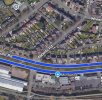
In 1650 a new brick mansion with dutch gables was built by the wealthy ironmaster, John Jennens. Built in fashionable brick close to the original site, the new hall had three storeys and Dutch gables. The Jennens family occupied the hall until the 18th century. By 1858 the house had lost its former status and was occupied by farmer, William Wheelwright who cut Wheelwright Road for access to Gravelly Hill. Although still occupied as a farm in 1908, the house was demolished by 1912, the site now lying beneath the Tyburn Road near Abbotts Road.
So somewhere around here:


